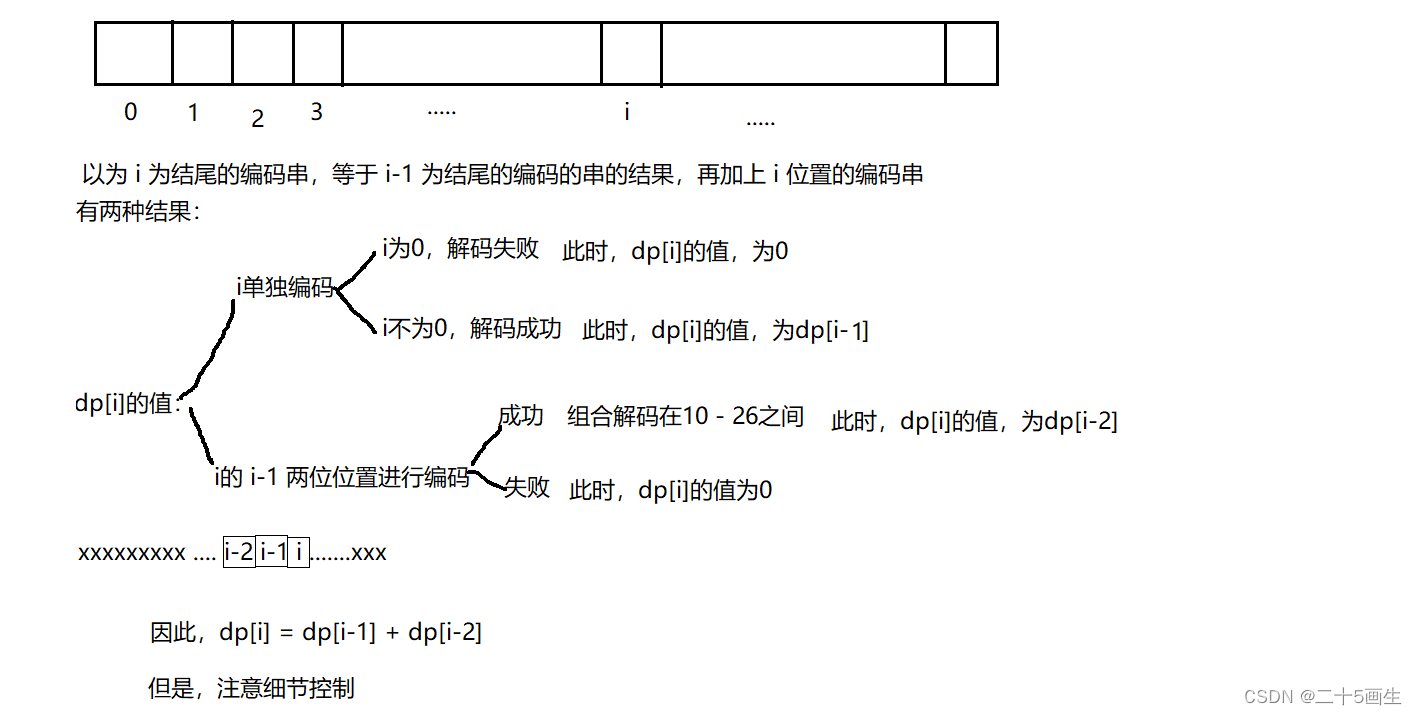目录
1 -> 红黑树
1.1 -> 红黑树的概念
1.2 -> 红黑树的性质
1.3 -> 红黑树节点的定义
1.4 -> 红黑树的结构
1.5 -> 红黑树的插入操作
1.6 -> 红黑树的验证
1.8 -> 红黑树与AVL树的比较
2 -> 红黑树模拟实现STL中的map与set
2.1 -> 红黑树的迭代器
2.2 -> 改造红黑树
2.3 -> map的模拟实现
2.4 -> set的模拟实现

1 -> 红黑树
1.1 -> 红黑树的概念
红黑树,是一种二叉搜索树,但在每个节点上增加了一个存储位表示节点的颜色,可以是Red或Black。通过对任何一条从根到叶子的路径上各个节点着色方式的限制,红黑树确保没有一条路径会比其他路径长出两倍,因而是接近平衡的。

1.2 -> 红黑树的性质
- 每个节点不是红色就是黑色。
- 根节点是黑色的。
- 如果一个节点是红色的,则它的两个孩子节点是黑色的。
- 对于每个节点,从该节点到其所有后代叶节点的简单路径上,均包含相同数目的黑色节点。
- 每个叶子节点都是黑色的(此处的叶子节点指空节点)。
1.3 -> 红黑树节点的定义
#define _CRT_SECURE_NO_WARNINGS 1
#include <iostream>
using namespace std;
// 节点的颜色
enum Color
{
RED, BLACK
};
// 红黑树节点的定义
template<class ValueType>
struct RBTreeNode
{
RBTreeNode(const ValueType& data = ValueType(),Color color = RED)
: _pLeft(nullptr), _pRight(nullptr), _pParent(nullptr)
, _data(data), _color(color)
{}
RBTreeNode<ValueType>* _pLeft; // 节点的左孩子
RBTreeNode<ValueType>* _pRight; // 节点的右孩子
RBTreeNode<ValueType>* _pParent; // 节点的双亲(红黑树需要旋转,为了实现简单给出该字段)
ValueType _data; // 节点的值域
Color _color; // 节点的颜色
};1.4 -> 红黑树的结构
为了后续实现关联式容器更加简单,红黑树的实现中增加一个头节点,因为根节点必须是黑色的,为了与根节点区分开,将头节点给成黑色,并且让头节点的pParent域指向红黑树的根节点,pLeft域指向红黑树中最小的节点,_pRight域指向红黑树中最大的节点。

1.5 -> 红黑树的插入操作
红黑树是在二叉搜索树的基础上加上其平衡限制条件,因此红黑树的插入可以分为两步:
1. 按照二叉搜索树的树规则插入新节点。
template<class ValueType>
struct RBTree
{
bool Insert(const ValueType& data)
{
PNode& pRoot = GetRoot();
if (nullptr == pRoot)
{
pRoot = new Node(data, BLACK);
// 根的双亲为头节点
pRoot->_pParent = _pHead;
_pHead->_pParent = pRoot;
}
else
{
// 1. 按照二叉搜索的树方式插入新节点
// 2. 检测新节点插入后,红黑树的性质是否造到破坏,
// 若满足直接退出,否则对红黑树进行旋转着色处理
}
// 根节点的颜色可能被修改,将其改回黑色
pRoot->_color = BLACK;
_pHead->_pLeft = LeftMost();
_pHead->_pRight = RightMost();
return true;
}
private:
PNode& GetRoot()
{
return _pHead->_pParent;
}
// 获取红黑树中最小节点,即最左侧节点
PNode LeftMost();
// 获取红黑树中最大节点,即最右侧节点
PNode RightMost();
private:
PNode _pHead;
}2. 检测新节点插入后,红黑树的性质是否遭到破坏。
因为新节点的默认颜色为红色,因此:如果其双亲节点的颜色是黑色,没有违反红黑树的任何性质,则不需要调整;但当新插入节点的双亲节点颜色为红色时,就违反了性质三,即不能有连在一起的红色节点,此时需要对红黑树分情况来讨论:
- 情况一:cur为红,p为红,g为黑,u存在且为红。
注意:此处看到的树可能是一棵完整的树,也可能是一棵子树。

如果g是根节点,调整完成后,需要将g改为黑色。
如果g是子树,g一定有双亲,且g的双亲如果是红色,就需要继续向上调整。

cur和p均为红,违反了性质三。
解决方法:将p、u改为黑,g改为红,然后把g当成cur,继续向上调整。
- 情况二:cur为红,p为红,g为黑,u不存在/u存在且为黑。

说明:
- 如果u节点不存在,则cur一定是新插入节点,因为如果cur不是新插入节点,则cur和p一定有一个节点的颜色是黑色,就不满足性质4:每条路径黑色节点个数相同。
- 如果u节点存在,则其一定是黑色的,那么cur节点原来的颜色一定是黑色的,现在看到其是红色的原因是因为cur的子树在调整的过程中将cur节点的颜色由黑色改成了红色。
p为g的左孩子,cur为p的左孩子,则进行右单旋转。
p为g的右孩子,cur为p的右孩子,则进行左单旋转。
p、g变色——p变黑,g变红。
- 情况三:cur为红,p为红,g为黑,u不存在/u存在且为黑。

p为g的左孩子,cur为p的右孩子,则针对p进行左单旋转。
p为g的右孩子,cur为p的左孩子,则针对p进行右单旋转。
则转换成情况二。
针对每种情况进行相应的处理即可。
bool Insert(const ValueType& data)
{
// ...
// 新节点插入后,如果其双亲节点的颜色为空色,则违反性质3:不能有连在一起的红色结点
while (pParent && RED == pParent->_color)
{
// 注意:grandFather一定存在
// 因为pParent存在,且不是黑色节点,则pParent一定不是根,则其一定有双亲
PNode grandFather = pParent->_pParent;
// 先讨论左侧情况
if (pParent == grandFather->_pLeft)
{
PNode unclue = grandFather->_pRight;
// 情况三:叔叔节点存在,且为红
if (unclue && RED == unclue->_color)
{
pParent->_color = BLACK;
unclue->_color = BLACK;
grandFather->_color = RED;
pCur = grandFather;
pParent = pCur->_pParent;
}
else
{
// 情况五:叔叔节点不存在,或者叔叔节点存在且为黑
if (pCur == pParent->_pRight)
{
_RotateLeft(pParent);
swap(pParent, pCur);
}
// 情况五最后转化成情况四
grandFather->_color = RED;
pParent->_color = BLACK;
_RotateRight(grandFather);
}
}
else
{
// …
}
}
// ...
}1.6 -> 红黑树的验证
红黑树的检测分为两步:
- 检测其是否满足二叉搜索树(中序遍历是否为有序序列)。
- 检测其是否满足红黑树的性质。
bool IsValidRBTree()
{
PNode pRoot = GetRoot();
// 空树也是红黑树
if (nullptr == pRoot)
return true;
// 检测根节点是否满足情况
if (BLACK != pRoot->_color)
{
cout << "违反红黑树性质二:根节点必须为黑色" << endl;
return false;
}
// 获取任意一条路径中黑色节点的个数
size_t blackCount = 0;
PNode pCur = pRoot;
while (pCur)
{
if (BLACK == pCur->_color)
blackCount++;
pCur = pCur->_pLeft;
}
// 检测是否满足红黑树的性质,k用来记录路径中黑色节点的个数
size_t k = 0;
return _IsValidRBTree(pRoot, k, blackCount);
}
bool _IsValidRBTree(PNode pRoot, size_t k, const size_t blackCount)
{
//走到null之后,判断k和black是否相等
if (nullptr == pRoot)
{
if (k != blackCount)
{
cout << "违反性质四:每条路径中黑色节点的个数必须相同" << endl;
return false;
}
return true;
}
// 统计黑色节点的个数
if (BLACK == pRoot->_color)
k++;
// 检测当前节点与其双亲是否都为红色
PNode pParent = pRoot->_pParent;
if (pParent && RED == pParent->_color && RED == pRoot->_color)
{
cout << "违反性质三:没有连在一起的红色节点" << endl;
return false;
}
return _IsValidRBTree(pRoot->_pLeft, k, blackCount) &&
_IsValidRBTree(pRoot->_pRight, k, blackCount);
}1.8 -> 红黑树与AVL树的比较
红黑树和AVL树都是高效的平衡二叉树,增删改查的时间复杂度都是O(n),红黑树不追求绝对平衡,其只需保证最长路径不超过最短路径的2倍,相对而言,降低了插入和旋转的次数,所以在经常进行增删的结构中性能比AVL树更优,而且红黑树实现比较简单,所以在实际运用中红黑树更多。
2 -> 红黑树模拟实现STL中的map与set
2.1 -> 红黑树的迭代器
迭代器的好处是可以方便遍历,是数据结构的底层实现与用户透明。如果想要给红黑树增加迭代器,需要考虑以下问题:
- begin()和end()
STL明确规定,begin()与end()代表的是一段前闭后开的区间,而对红黑树进行中序遍历后,可以得到一个有序的序列,因此:begin()可以放在红黑树中最小节点(即最左侧节点)的位置,end()放在最大节点(最右侧节点)的下一个位置,关键是最大节点的下一个位置在哪里呢?能否给成nullptr呢?
答案是行不通的,因为对end()位置的迭代器进行--操作,必须要能找到最后一个元素,此处就不行,因此最好的方式是将end()放在头节点的位置:

- operator++()与operator--()
// 找迭代器的下一个节点,下一个节点肯定比其大
void Increasement()
{
//分两种情况讨论:_pNode的右子树存在和不存在
// 右子树存在
if (_pNode->_pRight)
{
// 右子树中最小的节点,即右子树中最左侧节点
_pNode = _pNode->_pRight;
while (_pNode->_pLeft)
_pNode = _pNode->_pLeft;
}
else
{
// 右子树不存在,向上查找,直到_pNode != pParent->right
PNode pParent = _pNode->_pParent;
while (pParent->_pRight == _pNode)
{
_pNode = pParent;
pParent = _pNode->_pParent;
}
// 特殊情况:根节点没有右子树
if (_pNode->_pRight != pParent)
_pNode = pParent;
}
}
// 获取迭代器指向节点的前一个节点
void Decreasement()
{
//分三种情况讨论:_pNode 在head的位置,_pNode 左子树存在,_pNode 左子树不
存在
// 1. _pNode 在head的位置,--应该将_pNode放在红黑树中最大节点的位置
if (_pNode->_pParent->_pParent == _pNode && _pNode->_color == RED)
_pNode = _pNode->_pRight;
else if (_pNode->_pLeft)
{
// 2. _pNode的左子树存在,在左子树中找最大的节点,即左子树中最右侧节点
_pNode = _pNode->_pLeft;
while (_pNode->_pRight)
_pNode = _pNode->_pRight;
}
else
{
// _pNode的左子树不存在,只能向上找
PNode pParent = _pNode->_pParent;
while (_pNode == pParent->_pLeft)
{
_pNode = pParent;
pParent = _pNode->_pParent;
}
_pNode = pParent;
}
}2.2 -> 改造红黑树
#pragma once
// set ->key
// map ->key/value
enum Colour
{
RED,
BLACK
};
template<class T>
struct RBTreeNode
{
RBTreeNode<T>* _left;
RBTreeNode<T>* _right;
RBTreeNode<T>* _parent;
T _data;
Colour _col;
RBTreeNode(const T& data)
:_left(nullptr)
, _right(nullptr)
, _parent(nullptr)
, _data(data)
, _col(RED)
{}
};
template<class T>
struct __TreeIterator
{
typedef RBTreeNode<T> Node;
typedef __TreeIterator<T> Self;
Node* _node;
__TreeIterator(Node* node)
:_node(node)
{}
T& operator*()
{
return _node->_data;
}
T* operator->()
{
return &_node->_data;
}
Self& operator--();
Self& operator++()
{
if (_node->_right)
{
// 下一个就是右子树的最左节点
Node* cur = _node->_right;
while (cur->_left)
{
cur = cur->_left;
}
_node = cur;
}
else
{
// 左子树 根 右子树
// 右为空,找孩子是父亲左的那个祖先
Node* cur = _node;
Node* parent = cur->_parent;
while (parent && cur == parent->_right)
{
cur = parent;
parent = parent->_parent;
}
_node = parent;
}
return *this;
}
bool operator!=(const Self& s)
{
return _node != s._node;
}
bool operator==(const Self& s)
{
return _node == s._node;
}
};
// set->RBTree<K, K, SetKeyOfT> _t;
// map->RBTree<K, pair<K, T>, MapKeyOfT> _t;
template<class K, class T, class KeyOfT>
class RBTree
{
typedef RBTreeNode<T> Node;
public:
typedef __TreeIterator<T> iterator;
iterator begin()
{
Node* cur = _root;
while (cur && cur->_left)
{
cur = cur->_left;
}
return iterator(cur);
}
iterator end()
{
return iterator(nullptr);
}
pair<iterator, bool> Insert(const T& data)
{
if (_root == nullptr)
{
_root = new Node(data);
_root->_col = BLACK;
return make_pair(iterator(_root), true);
}
Node* parent = nullptr;
Node* cur = _root;
KeyOfT kot;
while (cur)
{
if (kot(cur->_data) < kot(data))
{
parent = cur;
cur = cur->_right;
}
else if (kot(cur->_data) > kot(data))
{
parent = cur;
cur = cur->_left;
}
else
{
return make_pair(iterator(cur), false);
}
}
// 新增节点给红色
cur = new Node(data);
Node* newnode = cur;
cur->_col = RED;
if (kot(parent->_data) < kot(data))
{
parent->_right = cur;
cur->_parent = parent;
}
else
{
parent->_left = cur;
cur->_parent = parent;
}
while (parent && parent->_col == RED)
{
Node* grandfather = parent->_parent;
if (parent == grandfather->_left)
{
// g
// p u
// c
Node* uncle = grandfather->_right;
if (uncle && uncle->_col == RED)
{
// 变色
parent->_col = uncle->_col = BLACK;
grandfather->_col = RED;
// 继续往上更新处理
cur = grandfather;
parent = cur->_parent;
}
else
{
if (cur == parent->_left)
{
// 单旋
// g
// p
// c
RotateR(grandfather);
parent->_col = BLACK;
grandfather->_col = RED;
}
else
{
// 双旋
// g
// p
// c
RotateL(parent);
RotateR(grandfather);
cur->_col = BLACK;
grandfather->_col = RED;
}
break;
}
}
else // parent == grandfather->_right
{
// g
// u p
// c
//
Node* uncle = grandfather->_left;
if (uncle && uncle->_col == RED)
{
// 变色
parent->_col = uncle->_col = BLACK;
grandfather->_col = RED;
// 继续往上处理
cur = grandfather;
parent = cur->_parent;
}
else
{
if (cur == parent->_right)
{
RotateL(grandfather);
parent->_col = BLACK;
grandfather->_col = RED;
}
else
{
// g
// u p
// c
//
RotateR(parent);
RotateL(grandfather);
cur->_col = BLACK;
grandfather->_col = RED;
}
break;
}
}
}
_root->_col = BLACK;
return make_pair(iterator(newnode), true);
}
void RotateL(Node* parent)
{
Node* subR = parent->_right;
Node* subRL = subR->_left;
parent->_right = subRL;
subR->_left = parent;
Node* parentParent = parent->_parent;
parent->_parent = subR;
if (subRL)
subRL->_parent = parent;
if (_root == parent)
{
_root = subR;
subR->_parent = nullptr;
}
else
{
if (parentParent->_left == parent)
{
parentParent->_left = subR;
}
else
{
parentParent->_right = subR;
}
subR->_parent = parentParent;
}
}
void RotateR(Node* parent)
{
Node* subL = parent->_left;
Node* subLR = subL->_right;
parent->_left = subLR;
if (subLR)
subLR->_parent = parent;
Node* parentParent = parent->_parent;
subL->_right = parent;
parent->_parent = subL;
if (_root == parent)
{
_root = subL;
subL->_parent = nullptr;
}
else
{
if (parentParent->_left == parent)
{
parentParent->_left = subL;
}
else
{
parentParent->_right = subL;
}
subL->_parent = parentParent;
}
}
void InOrder()
{
_InOrder(_root);
cout << endl;
}
void _InOrder(Node* root)
{
if (root == nullptr)
return;
_InOrder(root->_left);
cout << root->_kv.first << " ";
_InOrder(root->_right);
}
// 根节点->当前节点这条路径的黑色节点的数量
bool Check(Node* root, int blacknum, const int refVal)
{
if (root == nullptr)
{
//cout << balcknum << endl;
if (blacknum != refVal)
{
cout << "存在黑色节点数量不相等的路径" << endl;
return false;
}
return true;
}
if (root->_col == RED && root->_parent->_col == RED)
{
cout << "有连续的红色节点" << endl;
return false;
}
if (root->_col == BLACK)
{
++blacknum;
}
return Check(root->_left, blacknum, refVal)
&& Check(root->_right, blacknum, refVal);
}
bool IsBalance()
{
if (_root == nullptr)
return true;
if (_root->_col == RED)
return false;
//参考值
int refVal = 0;
Node* cur = _root;
while (cur)
{
if (cur->_col == BLACK)
{
++refVal;
}
cur = cur->_left;
}
int blacknum = 0;
return Check(_root, blacknum, refVal);
}
int Height()
{
return _Height(_root);
}
int _Height(Node* root)
{
if (root == nullptr)
return 0;
int leftHeight = _Height(root->_left);
int rightHeight = _Height(root->_right);
return leftHeight > rightHeight ? leftHeight + 1 : rightHeight + 1;
}
size_t Size()
{
return _Size(_root);
}
size_t _Size(Node* root)
{
if (root == NULL)
return 0;
return _Size(root->_left)
+ _Size(root->_right) + 1;
}
Node* Find(const K& key)
{
Node* cur = _root;
while (cur)
{
if (cur->_kv.first < key)
{
cur = cur->_right;
}
else if (cur->_kv.first > key)
{
cur = cur->_left;
}
else
{
return cur;
}
}
return NULL;
}
private:
Node* _root = nullptr;
};
2.3 -> map的模拟实现
map的底层结构就是红黑树,因此在map中直接封装一棵红黑树,然后将其接口包装下即可。
#pragma once
#include"RBTree.h"
namespace fyd
{
template<class K, class V>
class map
{
public:
struct MapKeyOfT
{
const K& operator()(const pair<K, V>& kv)
{
return kv.first;
}
};
// 对类模板取内嵌类型,加typename告诉编译器这里是类型
typedef typename RBTree<K, pair<K, V>, MapKeyOfT>::iterator iterator;
iterator begin()
{
return _t.begin();
}
iterator end()
{
return _t.end();
}
V& operator[](const K& key)
{
pair<iterator, bool> ret = insert(make_pair(key, V()));
return ret.first->second;
}
pair<iterator, bool> insert(const pair<K, V>& kv)
{
return _t.Insert(kv);
}
private:
RBTree<K, pair<K, V>, MapKeyOfT> _t;
};
}
2.4 -> set的模拟实现
set的底层为红黑树,因此只需在set内部封装一棵红黑树,即可将该容器实现出来。
#pragma once
#include"RBTree.h"
namespace fyd
{
template<class K>
class set
{
public:
struct SetKeyOfT
{
const K& operator()(const K& key)
{
return key;
}
};
typedef typename RBTree<K, K, SetKeyOfT>::iterator iterator;
iterator begin()
{
return _t.begin();
}
iterator end()
{
return _t.end();
}
pair<iterator, bool> insert(const K& key)
{
return _t.Insert(key);
}
private:
RBTree<K, K, SetKeyOfT> _t;
};
}
感谢各位大佬支持!!!
互三啦!!!


















